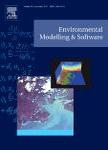版权所有:内蒙古大学图书馆 技术提供:维普资讯• 智图
内蒙古自治区呼和浩特市赛罕区大学西街235号 邮编: 010021

作者机构:Beijing Normal Univ Sch Environm Key Lab Water & Sediment Sci Minist Educ Beijing 100875 Peoples R China Hunan Normal Univ Sch Informat Sci & Engn Changsha 410081 Hunan Peoples R China Beijing Normal Univ Sch Environm State Key Lab Water Environm Simulat Beijing 100875 Peoples R China
出 版 物:《ENVIRONMENTAL MODELLING & SOFTWARE》 (Environ. Model. Softw.)
年 卷 期:2025年第191卷
核心收录:
学科分类:0830[工学-环境科学与工程(可授工学、理学、农学学位)] 08[工学] 0815[工学-水利工程] 0812[工学-计算机科学与技术(可授工学、理学学位)]
基 金:Joint Funds of the National Natural Science Foundation of China [U2243236] National Key Research and Development Program of China [2022YFC3202001] National Science Fund for Distinguished Young Scholars Open Fund of State Key Laboratory of Remote Sensing Science and Beijing Engineering Research Center for Global Land Remote Sensing Products [OF202208] Innovative Research Group of the National Natural Science Foundation of China
主 题:River assimilative capacity Optimization model Environmental gini coefficient Fairness and efficiency MIKE 11 model
摘 要:The allocation of river assimilative capacity (RAC) remains a complex challenge due to the trade-offs between environmental fairness and efficiency. To address these issues, a novel integrated framework for the optimal allocation of RAC was proposed. The Luan River Basin in Chengde City, China, was selected as a case study. Hydrodynamic and advection-dispersion modules from the MIKE 11 model were implemented and then integrated into the RAC model. An orthogonal experimental method was used to identify significant factors influencing RAC, and three regulatory scenarios were designed. The environmental Gini coefficient (EGC) was modified using a probability distribution function to evaluate fairness-based allocation of RAC, and the environmental benefits were used to quantitatively measure efficiency-based allocation. Subsequently, a modified optimization model was developed to determine the optimal RAC allocation under three regulatory scenarios based on environmental fairness and efficiency trade-offs. Results showed that the initial state was the least favorable, with the lowest RAC and highest modified EGC. Under high regulation, the average modified EGC decreased by 68.97 %, 53.49 %, and 18.22 % compared to the initial state, low, and moderate regulation, respectively. High regulation was ideal for environmental fairness. However, when considering the trade-offs between fairness and efficiency, moderate regulation achieved the optimal allocation, minimizing the objective function by 68.64 % compared to high regulation. The study provides new insights into targeted RAC allocation strategies to promote fairness and maintain efficiency.